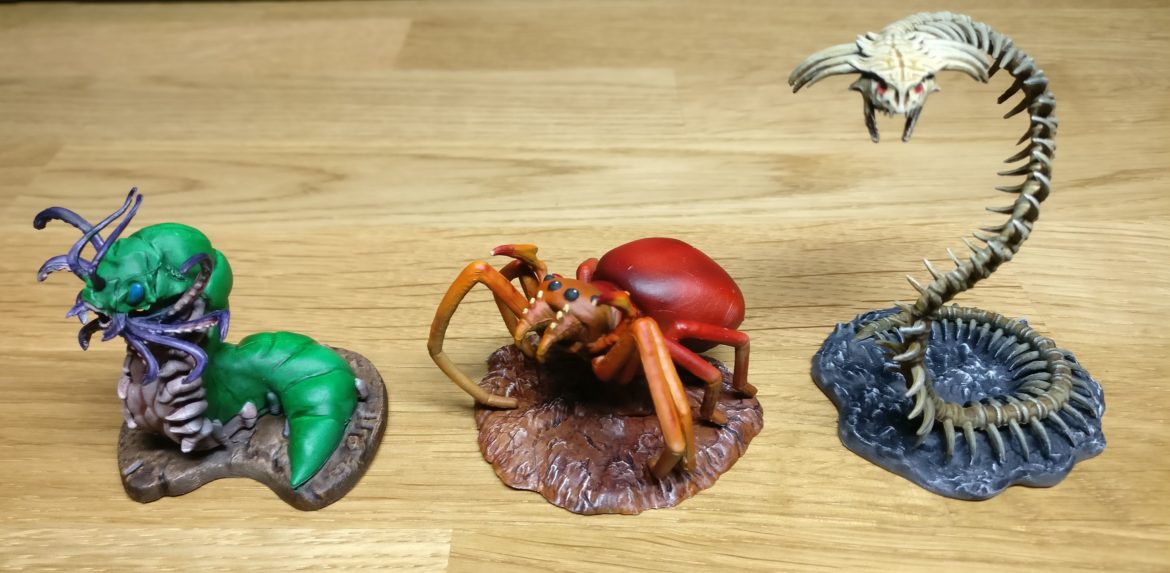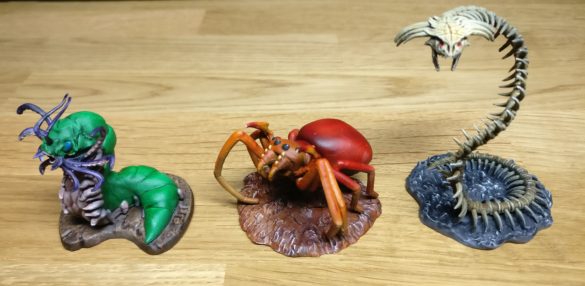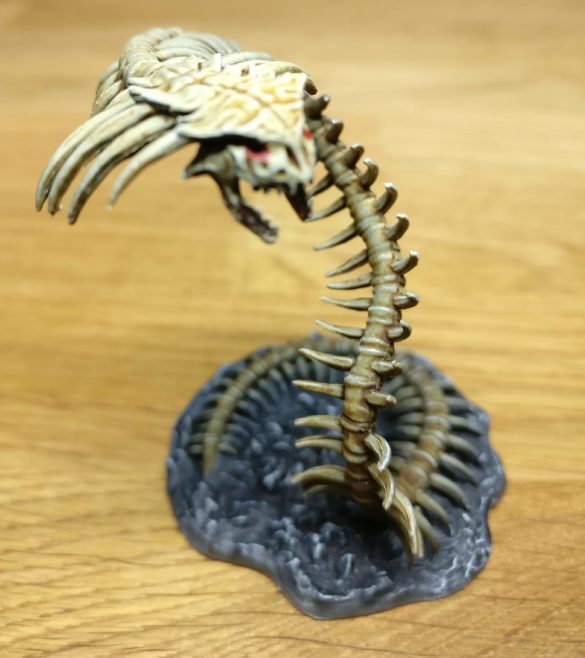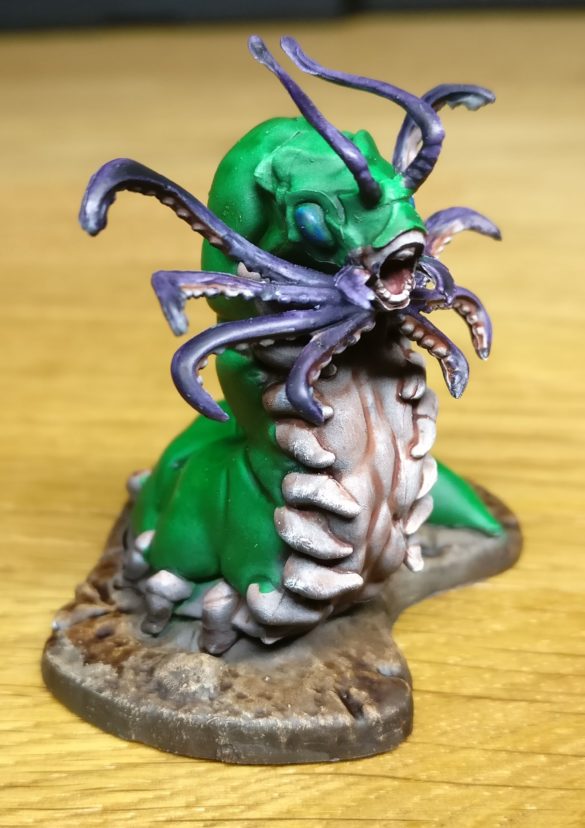I’ve had an eye on The Army Painter’s new range of ‘Speed Paints’ since last December, and last week I found the starter set containing ten paints in my friendly local game store. I also had a lot of cheap Wizkids DND miniatures sitting around, and what better use for these than testing out speed painting with Speed Paints?
My tests were hardly scientific or comprehensive – you might check out Goobertown or Dana Howl on YouTube for that – and I wanted to try using them both with a brush and with my airbrush. The main difference in result between these two tools is that with a brush you benefit from the way these low viscosity paints will flow into recesses, producing easy shading and contrast, whereas with an airbrush the paints’ low opacity makes for colour filters that look great over, say, zenithal priming or other forms of underpainting.
Speaking of which, although these models, all from the ‘Nolzur’s Marvellous Miniatures‘ range, are advertised as pre-primed, in the past I’ve found that diluted paints struggle to adhere to the surfaces, so I primed all of these with Vallejo Panzer Grey and then gave them a zenithal highlight with Liquitex Titanium White ink through my airbrush. This was my first time using that ink, incidentally, and it beats the snot out of any other white paint I’ve tried through an airbrush.
After priming I painted all three miniatures in just over two hours – so it was certainly possible to speed paint with Speed Paints! The Giant Spider was painted using an airbrush. I was lazy and used my priming airbrush with a .5mm needle. I’m sure I could have gotten better results had I used a smaller needle, and prepared more careful highlights with the white ink to define where the colours should be more or less saturated. As a proof of technique, though, it worked!
The other two were painted with the brush. The Bone Naga was perfect for the speed paints flowing into the recesses. The Carrion Crawler has far more smooth, flat surfaces, and I was pleased to find the paints still looked decent and had solid coverage over these.
I used a bare minimum of other paints to accentuate a few details. The Spider got black eyes with off-white dots to suggest light reflection; I also planned to apply gloss varnish over them but forgot. All three miniatures got a little drybrushing in places using the same Vallejo off-white; this particularly added contrast to the Bone Naga.
The paint jobs are quick and there are inevitable mistakes. Cleaning these up after the fact might be interesting, as these paints can ‘reactivate’ when more Speed Paint is added even over dried surfaces – which might be a blessing or a curse, depending on what you wish to do. I didn’t worry about these since these are not exactly display miniatures.
Overall I’m pleased with the addition of these Speed Paints to my collection. Some of the colours are very rich and vibrant, and all of them were easy to work with. They also mix well enough. The biggest issue I had, to be honest, was deciding whether to use the dropper bottles to add paint to my wet palette in small quantities, since it will naturally spread out more than a regular acrylic, or to a dry palette with wells, where the low humidity in Finland may lead to the paint medium evaporating more rapidly, meaning the paint thickens if you are working with it for a longer period of time.
As to the starter set, my only quibble is that it didn’t include a bottle of ‘Speed Paint Medium’, which sounds vital if you wish to dilute any of these paints to control the level of saturation. This isn’t a deal-breaker, though it is a shame, especially as my local game store did not at the time stock the medium separately (it looks as if they have it on order, though). To be honest, it’s tough to choose one of the ten paints I’d sacrifice in favour of the medium, so I can live with this. I’m not sure if diluting these paints with water would work terribly well, as I imagine it would probably affect the viscosity, control and coverage quite poorly.
Please forgive that the close-up photos expose many mould lines. I’ve found these not worth trying to clean up on these kinds of miniature, as the plastic is too soft and flexible. I’m also temporarily using an old phone to take pictures.





